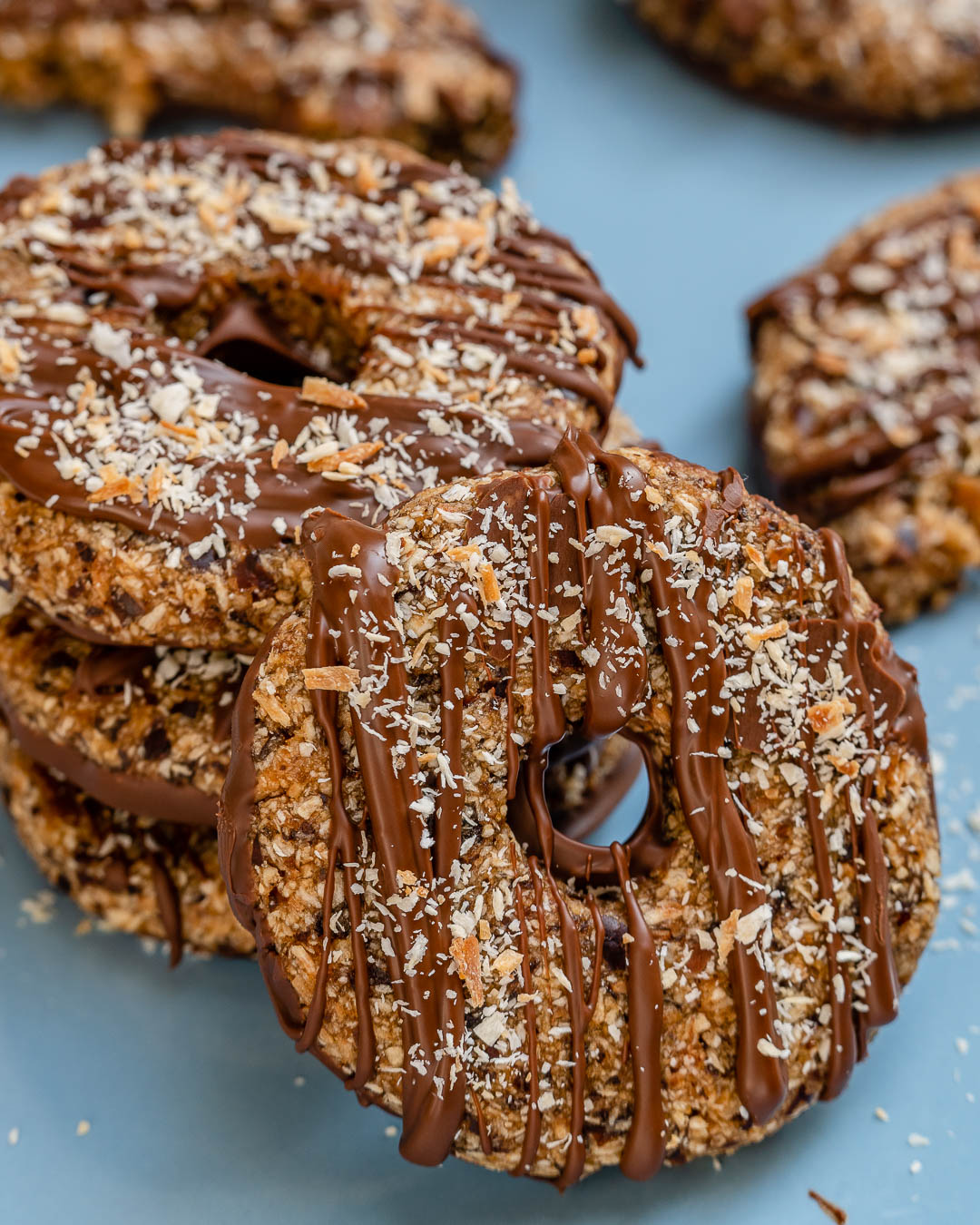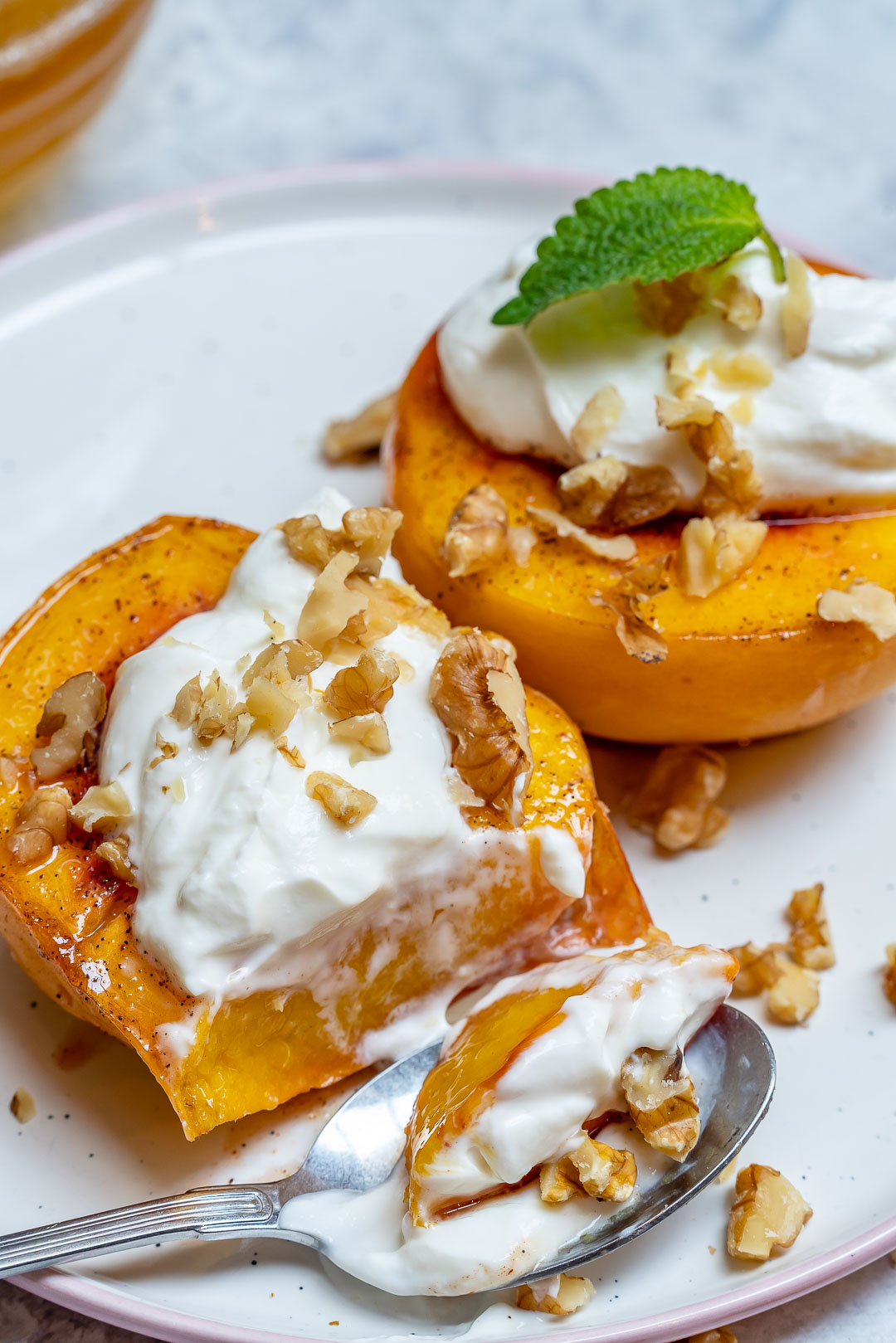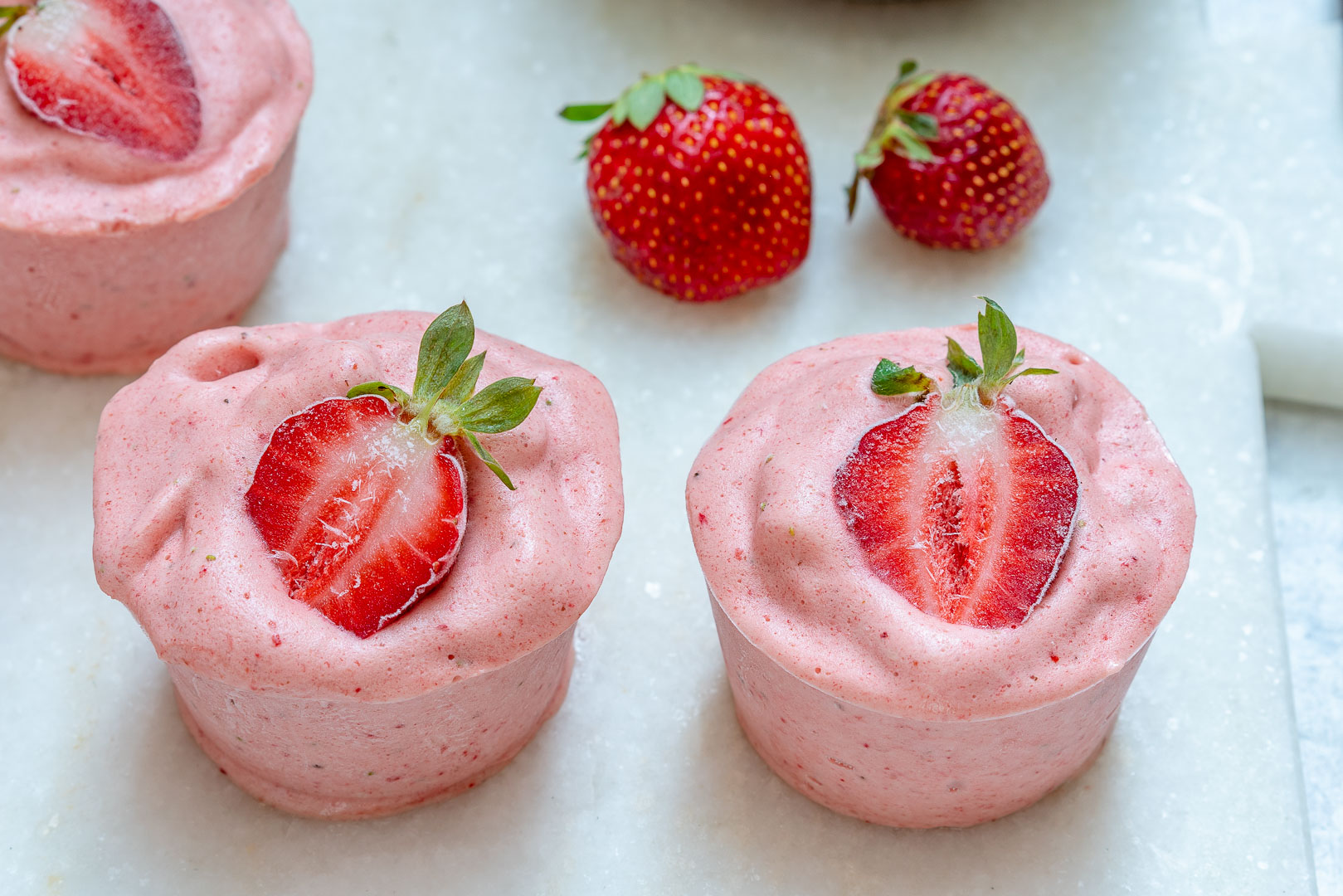

Is Sugar Bad for Us?
Here are some ways you can enjoy sugar while still honoring your health.
What comes to mind when you think of sugar?
Your first thought may be that it’s sweet and delicious, but you may also immediately think that it’s something “bad” that should be avoided and inflicts guilt when eaten.
There has been a lot of debate about sugar both in science and in the media in recent years, so the questions of whether or not it’s okay to eat and if so, what types and how much, are completely understandable.
Sugar can be confusing!
So we’re here to help break down how sugar affects our bodies, explain the different types of sugar, and provide tips for enjoying its sweet flavor in a few healthier ways.
These Healthy Copycat Girl Scout Samoas are INSANELY Delicious!
How sugar impacts the body
Sugar is a type of simple carbohydrate that is quickly digested and absorbed into the bloodstream when eaten. It is added to a variety of foods to improve flavor, likeability, texture, and other properties of food. Our taste buds are naturally designed to love and crave sugar, and you’ve probably noticed that sugar can be addictive. We have all heard about how sugar can lead to conditions like diabetes and heart disease, which has to do with how it is metabolized in the body.
When we eat sugar, the hormone insulin is produced by our pancreas to bring that sugar out of our bloodstream and into our cells to be used as energy. This helps keep our blood sugar levels from getting too high. It is normal and natural for blood sugar levels to rise and eventually fall after eating, but when large amounts of sugar is eaten, levels tend to rise higher and fall more quickly, creating sort of a rollercoaster of levels going up and down.
How much a food causes the blood sugar to rise is known as the glycemic response, and some foods have a higher glycemic response than others. Frequently eating foods with a high glycemic response is what leads to insulin resistance and inflammation, which in turn can lead to the development of various negative health conditions.
Try These Sensational Honey Roasted Peaches!
It is important to know that the body responds to sugar differently depending on a few different factors, including:
- What form it is in. Liquid sugar, such as in juice, syrup, or soda, will raise the blood sugar much quicker than sugar in solid form.
- Whether or not it is consumed by itself or paired with other macronutrients like protein and fat. Eating sugar by itself is more damaging to the body and provides less nutrition than consuming it alongside protein and/or fat.
- Whether or not it is accompanied by dietary fiber. Dietary fiber helps to reduce the glycemic response and overall promotes more stable blood sugar levels.
Is all sugar created equally?
This is where the topic of sugar becomes a little bit more complicated. There are many, many different types and forms of sugar. In fact, there are well over 50 different names for sugar that can be found on a food label, which makes it confusing and easy to hide! The most common names for sugar end in the suffix “-ose” such as dextrose, sucrose, and fructose. Other forms of sugar may have the word “syrup”, “nectar”, or “malt” in them, and there’s also other forms that contain the more obvious name of “sugar”.
Different types of sugar, along with the form it is in when eaten, impact the body and overall health in different ways. Some sugars are naturally occurring, and are coupled with other nutrients in the food like vitamins, minerals, and sometimes fiber.
Examples of natural sugars include:
- Fruit
- Milk and the dairy products made with it such as plain yogurt
- Natural sweeteners like honey, maple syrup, and agave
Other types of sugars are added to foods, and may or may not include the presence of other beneficial nutrients.
Common foods with added sugars include:
- Candy and other sweets like chocolate and ice cream
- Pastries
- Some cereals
- Flavored yogurts
- Sweetened beverages like tea, coffee and soda
- Many condiments like ketchup and barbeque sauce
Scientists and health officials have determined that foods with added sugars are the most detrimental to health. To help raise awareness of added sugars, the FDA approved the implementation of a new food label in 2018, which requires them to be specified on the panel. This change can now be seen on most food labels in the stores and is listed as “includes ___ g of added sugars” underneath the total carbohydrates column.
The Dietary Guidelines for American’s recommends limiting the amount of added sugars to less than 10% of total calories eaten. Since each gram of sugar contains 4 calories per gram, this would look like about 200 calories or less from added sugars for someone eating about 2,000 calories per day, which is equal to 50 grams. Keep in mind that even naturally occurring sugars like honey or dried fruit can be added to foods, which still raises their overall sugar content and is something that should be limited.
Strawberry Protein “Nice” Cream Cups for Clean Eating FUN!
Tips for reducing sugar intake while still satisfying your sweet tooth
Thankfully, there is no scientific evidence that consuming sugar in moderation as part of an overall balanced diet is harmful to the body. The problems mostly arise when excess amounts of sugar are consumed, and especially if it is consumed in ways that cause a more drastic blood sugar rise and fall.
So just like most people, we want to be able to enjoy sugar, too!
Here are some tips to keep in mind when satisfying your sweet tooth:
- Avoid or significantly limit sugar in liquid forms, including fruit juice and sweetened beverages. When making smoothies, make sure to add in some veggies and a healthy fat source to reduce the overall sugar content and glycemic response.
- Aim to always consume sugar along with protein, fiber, and/or a healthy fat source instead of by itself. An example of this could be choosing chocolate covered nuts instead of plain chocolate.
- Be mindful of the amount of added sugars on a food label, and use it as a guideline when comparing different products. Try to familiarize yourself with the different names for sugar and the foods that are most likely to contain it.
- Focus on natural sugars like maple syrup or whole fruit when sweetening foods, yet still try to cut back on the overall amount. Choosing zero-calorie natural sweeteners like stevia or monk fruit is also a good option to try.
- Practice portion control. We know this is easier said than done, but moderation really is key when it comes to sugar. Thankfully, your taste buds can adapt to eventually craving less sugar the more you cut back on it, so try to do so gradually for best success!
Bottom line
The answer to whether sugar is bad for us isn’t a simple “yes” or “no” response, but depends on many factors as described. We believe in balance and know that completely avoiding sugar is unrealistic and unsustainable. It’s okay to enjoy all types of sugar from time to time, but we recommend that the focus be placed on natural sugars while still limiting overall intake. So please, feel free to enjoy something sweet without guilt in moderation, and know that it’s the bigger picture of your diet that matters most when it comes to health!



















